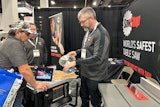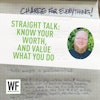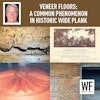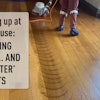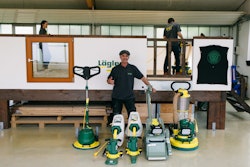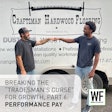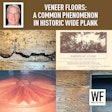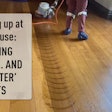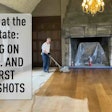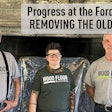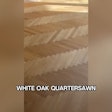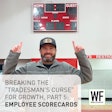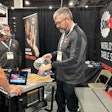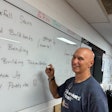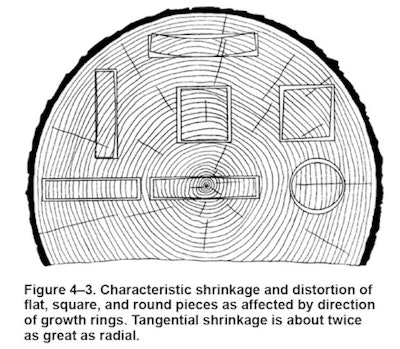
This blog will explore simple moisture content changes of individual S4S RO boards and how that would be related to changes in shape and how that could be related to cupping. But first…
A quick review of the initial article: Cupping = boards that are concave on the face. I have initially proposed six experiments where variables are limited to see which actions cause which reactions. The list of experiments is summarized below, but you can see the more complete explanations in my Dec. 11 blog link.
Experiment 1: 10 S4S RO boards ¾" x 4" x 72" edge-to-edge into a panel ¾" x 40" x 72". Place and tighten pipe clamps at 3" intervals across the 40" dimension. What happens?
Experiment 2: 10 pieces RO flooring ¾" x 4" x 72" edge-to-edge into a panel ¾" x 40" x 72". Place and tighten pipe clamps at 3" intervals across the 40" dimension. What happens?
Experiment 3: 10 pieces RO flooring ¾" x 4" x 72", MC 6%-8%, nailed to ¾" plywood with a MC of 6%-8%. Put a wet towel on the face of the boards with 6-mil ploy over towel. What happens?
Experiment 4: 10 pieces RO flooring ¾" x 4" x 72", MC 6%-8%, nailed to ¾" plywood with a MC of 14%-16%. 6-mil poly on underside of plywood. What happens?
Experiment 5: 10 pieces RO flooring ¾" x 4" x 72", MC 14%-16%, nailed to ¾" plywood with a MC of 6%-8%. 6-mil poly on underside of plywood. What happens?
Experiment 6: 10 pieces RO flooring ¾" x 4" x 72", MC 14%-16%, nailed to ¾" plywood with a MC of 14%-16%. 6-mil poly on underside of plywood. What happens?
We are going to discuss the effect of a simple change in MC of individual RO boards. Since I did not include this in my original list of experiments, we will call this Experiment 1A. There is a cool graphic in the Wood Handbook that shows shape changes in boards with varying grain orientations:
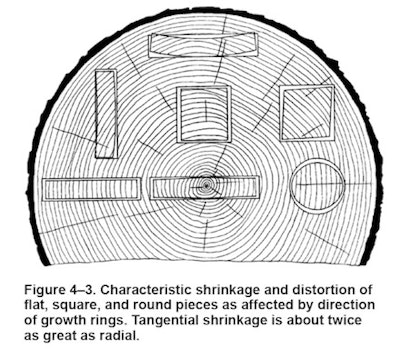
(Note that you can download the chapters of the Wood Handbook for free here; you can download Chapter 4: Moisture Relations and Physical Properties of Wood by clicking the illustration above.)
We are going to keep this simple and use a very slow and gradual change in MC with very small differences in MC within the board, which eliminates the effect of having large differences in MC on opposite sides of the board. Again, we are controlling conditions, so that we will only see what happens when a single factor causes the individual boards to change shape. These boards are unrestrained so that we don't have any additional factors related to installation to worry about.
The intent of this experiment is to see what effect a simple gradual change in MC would have on the shape of individual boards without any other compounding factors such as:
- configuration of the tongue and groove edges
- mechanical fasteners along the edges or into the face
- gluing of the boards to a substrate
- configuration of the relief cuts on the bottom surface
We can see that changes in shape after individual solid boards are manufactured are to be expected and would vary depending on the amount of MC change and in conjunction with differences in growth ring orientation between the opposite faces of the boards. Quartersawn (radial) boards shrink and swell less than plainsawn (tangential) boards, so if opposite faces have different shrink/swell factors, voila. If just the occasional board is cupping, then it might be caused by a grain-orientation-related effect. If every board is cupping, it is extremely improbable that it is a grain-orientation issue.
Bonus information: Now remember that we are talking about boards that are completely unrestrained (that means not installed). So if you were to allow wide-plank flooring to "acclimate" under high RH conditions, the individual boards would definitely change size (swelling), and there could also be significant changes in shapes. Would the boards be cupped? Yes and no, because flooring is fed into the molder/matcher with the best-looking face as the exposed face, the orientation of grain would be random. Some boards would be cupped (concave) and some would be convex. Unless there was a really big change in MC, these shape changes would probably not be that noticeable other than some complaints from the installers about varying width and difficulty banging the tongue and groove together.
On a separate note, on Saturday, January 21, I am putting on a one-day seminar on Dyeing Dark Floors at the Bona Regional Training Center in Bridgewater, Mass. Topics will include mixing and applying aniline dyes and which finishes can be applied over dye. E-mail me for information. I need to limit the class to 15. Lunch will be served.











